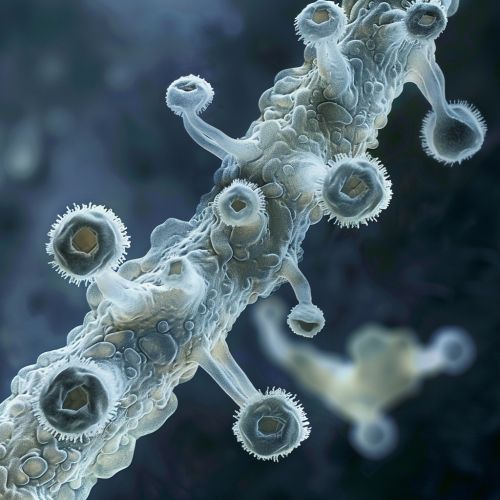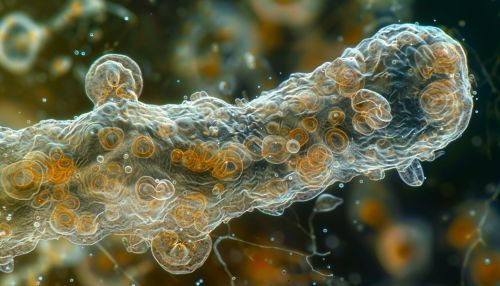Amoeboid movement
Introduction
Amoeboid movement is a mode of locomotion used by several types of cells and unicellular organisms, most notably amoebas. This form of movement is characterized by the formation and extension of pseudopodia, which are temporary, arm-like projections of the cell's cytoplasm. The process of amoeboid movement involves complex changes in cell shape and is driven by the controlled assembly and disassembly of actin filaments, a type of protein that forms part of the cell's cytoskeleton.


Mechanism of Amoeboid Movement
The mechanism of amoeboid movement is a fascinating example of cellular motility, involving a complex interplay of cellular structures and biochemical processes. The key player in this process is the actin cytoskeleton, a dynamic network of protein filaments that gives the cell its shape and enables it to move.
Actin Cytoskeleton
The actin cytoskeleton is a highly dynamic structure that can rapidly assemble and disassemble in response to cellular signals. This dynamic nature of the actin cytoskeleton is what enables cells to change their shape and move. In the context of amoeboid movement, the actin cytoskeleton forms the pseudopodia that the cell uses to move.
Pseudopodia Formation
The formation of pseudopodia begins with the polymerization of actin filaments at one part of the cell. This results in the extension of the cell membrane, forming a pseudopod. The cell then adheres the tip of the pseudopod to the substrate, and contracts its rear end, effectively pulling itself forward.
Role of Motor Proteins
Motor proteins, such as myosin, play a crucial role in amoeboid movement. These proteins interact with the actin filaments, generating the forces needed for cell movement. The contraction of the cell's rear end, for example, is driven by the interaction of myosin with actin.
Regulation of Amoeboid Movement
The regulation of amoeboid movement involves a complex network of signaling pathways that control the assembly and disassembly of the actin cytoskeleton. Key players in these signaling pathways include small GTPases, such as Rho, Rac, and Cdc42, and their downstream effectors.
Role of Small GTPases
Small GTPases act as molecular switches, turning on and off the signaling pathways that control the dynamics of the actin cytoskeleton. In their active state, these proteins stimulate the polymerization of actin filaments, leading to the formation of pseudopodia.
Downstream Effectors
The downstream effectors of small GTPases include a variety of proteins that directly interact with the actin cytoskeleton. These proteins include actin-binding proteins, which regulate the assembly and disassembly of actin filaments, and motor proteins, which generate the forces needed for cell movement.
Biological Significance of Amoeboid Movement
Amoeboid movement is not only a fascinating biological phenomenon, but also has important implications for health and disease. This form of movement is used by a variety of cells in the human body, including immune cells, which use amoeboid movement to navigate through tissues and reach sites of infection.
Role in Immune Response
Immune cells, such as neutrophils and macrophages, use amoeboid movement to navigate through the complex network of tissues in the body. This allows these cells to quickly reach sites of infection or injury, where they can carry out their immune functions.
Implications for Disease
Amoeboid movement also has implications for disease, particularly cancer. Cancer cells can adopt an amoeboid mode of movement to invade surrounding tissues and spread to other parts of the body, a process known as metastasis.
